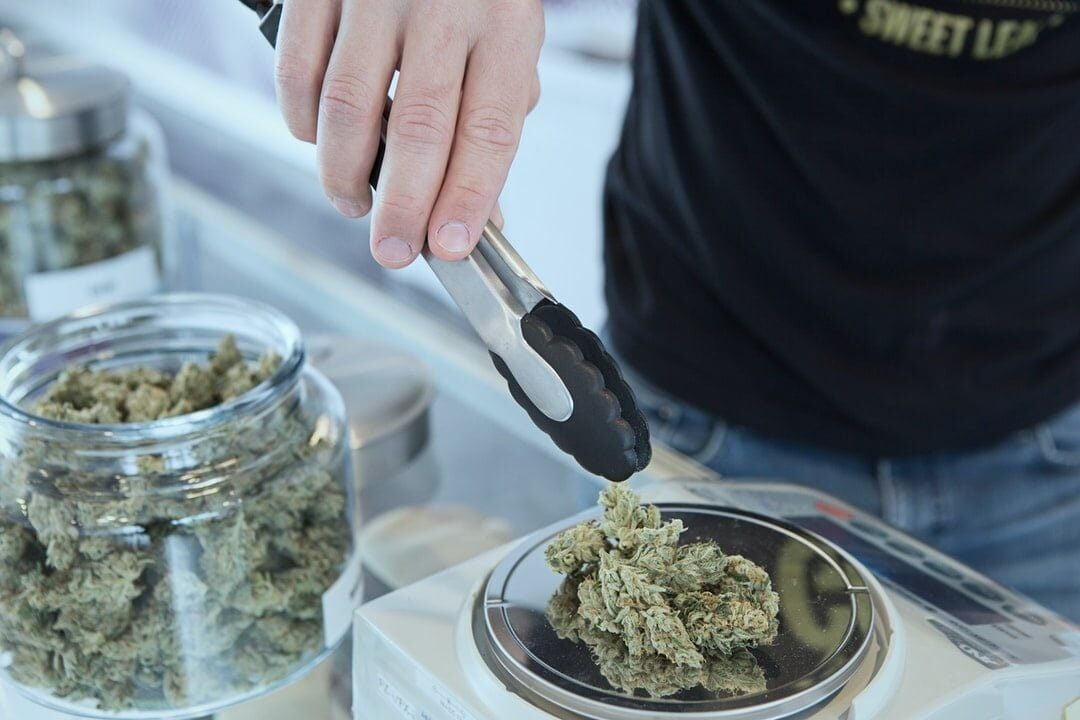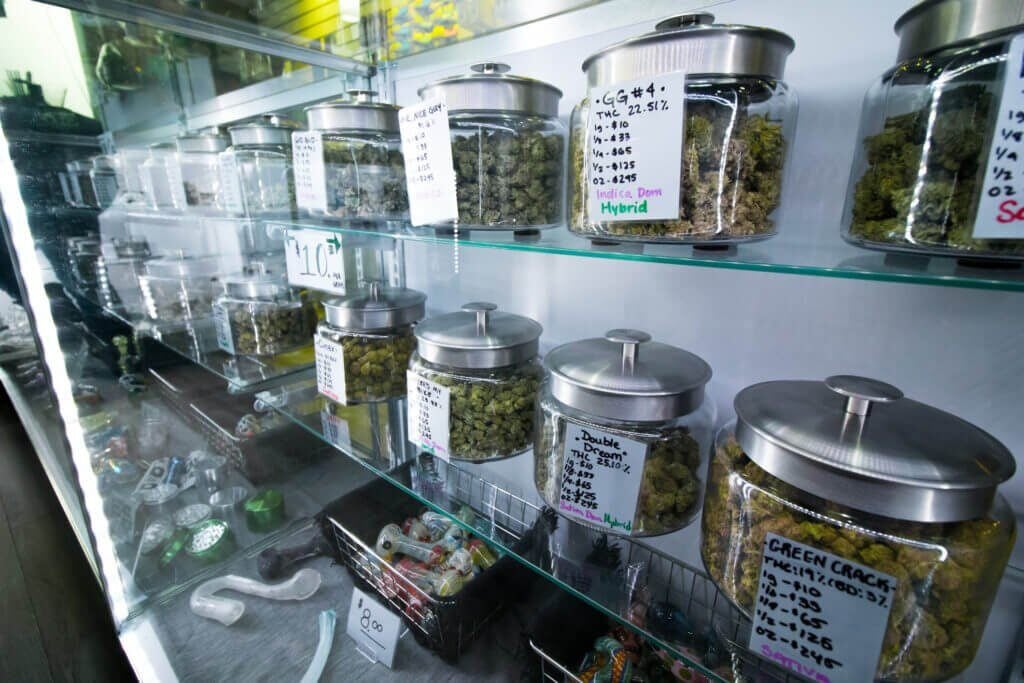7 min read
Ohio Medical Marijuana: An Ultimate Guide
On June 8, 2016, former Ohio governor John Kasich signed House Bill 523 into law. This bill legalized the use of medical marijuana across the...
7 min read
Erick Kaufman MD
:
Apr 13, 2022 12:00:00 AM

On June 8, 2016, then-governor John Kasich signed House Bill 523, which legalized the medical use of cannabis in the state of Ohio. The bill became effective three months later on September 8, 2016.
State residents who suffer from certain qualifying conditions can now participate in the Ohio Medical Marijuana Control Program. To purchase and use medical marijuana, they’ll need a recommendation from an Ohio-licensed physician who is certified by the State Medical Board.
The ins and outs of this program can be complex, and it’s important to understand the details. Today, we’re sharing everything you need to know about medical marijuana in Ohio, including how to register for the program and what your next steps should be.
The Ohio Medical Marijuana Control Program is a joint effort between three state government agencies. These include:
Let’s take a closer look at the role that each agency plays in the program.
The Ohio Department of Commerce manages the work of the state’s medical marijuana cultivators. The department is also responsible for overseeing the processors and testing labs to ensure all operations are up to requisite codes and standards.
The State of Ohio Board of Pharmacy manages four important activities in the state’s medical cannabis program. These include:
The State of Ohio Medical Board is responsible for certifying the physicians who are permitted to recommend medical marijuana to patients. The board also has the authority to alter or add to the list of qualifying conditions for which physicians can recommend medical marijuana.
According to state laws, registered patients or caregivers must not possess more than a 90-day supply of medical marijuana. Dispensaries are required to calculate this supply by dividing their 90-day recommendation into two 45-day fill periods. Certified physicians can approve up to three refills per year, for a total 360-day supply if appropriate for the patient.
These periods are based on the patient’s current and active recommendation. The first fill period will cover days 1-45 of the recommendation and begins when the patient receives the recommendation. The second fill period will cover days 46-90 of the recommendation.
During each 45-day period, the patient or caregiver may purchase up to a 45-day supply of medical marijuana in Ohio. They can make that purchase at any point within the fill period. For instance, they can purchase a 45-day supply on day 1 of the fill period, or wait until day 30 and purchase up to the same amount, as long as they have not purchased any product earlier.
Once you receive your Patient and Caregiver Registry card in the mail, you can start visiting an approved Ohio cannabis dispensary to purchase medical marijuana. What kinds are you permitted to use and keep?
To date, the state has approved the following forms of medical marijuana:
Currently, the law does not allow patients to consume medical marijuana by smoking or combustion. Additionally, medical marijuana may not be sold in any form that is attractive to children. However, the law does permit the practice of vaping.
House Bill 523 allowed Ohio residents to treat qualifying conditions with medical marijuana and its derivatives. This includes cannabidiol or CBD.
If you want to use marijuana-derived CBD, you’ll need to go through the steps described in this article. This includes gaining approved entry into the Patient and Caregiver Registry. However, you can purchase CBD without registering, as long as it’s derived from hemp.
Why the distinction?
While hemp and marijuana come from the same parent plant (cannabis), they contain different ratios of two important cannabinoids: CBD and Tetrahydrocannabinol (THC). The latter, THC, is the cannabinoid most closely associated with the feeling of euphoria, or “high” that users experience when ingesting marijuana.
Hemp is naturally high in CBD and contains only trace amounts of THC (up to 0.3%). Thus, products made from this type of cannabis won’t deliver the same high as you’d experience with a THC-based project. Conversely, marijuana is higher in THC, and its CBD content will vary depending on the strain.
CBD oils made from marijuana can deliver a high, so they’re regulated more strictly by Ohio law. If you wish to consume CBD without a medical marijuana card, you’ll need to verify that the product contains no more than 0.3% THC.
Are you an Ohio resident seeking access to medical marijuana? There are a few essential steps you’ll need to follow before you can do so. Here’s a breakdown of how the process works.
Your first step is to visit an Ohio-licensed physician who is certified by the State Medical Board. Only these health professionals are allowed to recommend medical marijuana to patients. If you’re unsure about your physician’s status, ask whether they have the requisite Certificate to Recommend (CTR).
Your physician is required to verify your identity and state residency. Any of the following documents are sufficient:
At your visit, you can explain your condition and associated symptoms to your physician. They will then confirm whether you are suffering from a health concern that’s included in the state’s list of qualifying medical conditions. To date, there are 25 conditions that qualify. These include:
In February 2021, the State Medical Board of Ohio determined that three conditions not listed above were covered by an existing qualifying condition. These included arthritis, chronic migraines, and complex regional pain syndrome. All three are covered under chronic or intractable pain.
In January 2022, the board received nine petitions to add 10 new qualifying conditions to the list above. This list includes lupus, anxiety, and depression, among others. They will review the petitions and are expected to make a decision by the summer of 2022.
Want to skip the waiting room and connect directly with a qualified physician? Doctors of Cannabis can help. Our team can put you in touch with an online doctor seven days a week, from 8:00 a.m. to 10:00 p.m.
You don’t even need an appointment. All you’ll need is a computer or cell phone, and we’ll take care of the rest.
Your doctor can review your condition and make the appropriate recommendation. If your condition is included on the list of qualifying ones, your doctor will walk you through the steps to download your certificate and register for your Ohio medical marijuana card.
The total cost of the certification and consultation in Ohio is just $199. You can visit our Ohio medical marijuana page to learn more about how the process works.
The Patient and Caregiver Registry contains the information of everyone certified to either purchase medical marijuana or administer it to someone under their care. At your doctor’s visit, your physician will start the registration process for you if your condition qualifies for this treatment.
You’ll receive an emailed link to complete your profile once you return home. Follow the instructions to complete your profile, and pay the registration fee. This fee is $50 per year for patients but may be waived for qualifying patients with indigent or veteran status.
If the Board of Pharmacy approves your registration, you will receive your Patient and Caregiver Registry card in the mail. You can then use that card to purchase medical marijuana from an Ohio dispensary. Make sure that the one you visit has an active Certificate of Operation granted by the State of Ohio Board of Pharmacy.
Note that your patient or caregiver registration will be valid for one year after the date of issuance. It will expire on the last date of the month it was issued.
What if you aren’t a patient, but a caregiver instead? In that case, the patient must notify their physician that they would like you to serve as their caregiver on their behalf. While some adults may require the oversight of a caregiver, one is required for any patient who is a minor or has a court-appointed legal guardian.
The physician will require a form of identification from you, just as they would from a patient. Once they’ve verified your identity and state residency, they will begin your profile in the Patient and Caregiver Registry.
After you confirm it, complete it, and pay the registration fee, you’ll submit it to the Board of Pharmacy for approval. Note that the registration fee for caregivers is $25 per year. If the associated patient qualifies for veteran or indigent status, their caregiver may receive a fee reduction, yet the fee will not be lowered if only the caregiver has this status.
If the board approves your registration, you will be allowed to purchase, possess, and administer medical marijuana. You can only do so for patients with whom your registration is associated. You’ll also need to follow the 90-day supply guidelines described above.
What would happen if you tried to use your Ohio medical marijuana card in another state? In the same vein, does Ohio accept medical marijuana cards from out of state?
Not yet. Under the law, the Board of Pharmacy must attempt to negotiate with other states and enter into reciprocity agreements with them. However, before doing so, the board must first review the eligibility requirements that the other state imposes to allow patients to receive a registry identification card.
If those requirements are substantially comparable to Ohio’s requirements, then they’ll check one more thing. The board will also need to verify that the state in question also recognizes a patient or caregiver registration and an identification card that’s been issued in Ohio.
To date, Ohio hasn’t established medical marijuana reciprocity with any other state. This means it does not recognize any medical marijuana registry cards issued anywhere outside of Ohio.
Now that we’ve covered how medical marijuana in Ohio works, are you ready to see if you qualify to register for the program? While you can go through the steps in person, why add time and effort to the task?
Our platform makes it easy to connect to a doctor, jumpstart the registration process, and receive your certification. Not only can our physicians help you obtain your medical marijuana card, but they’re also on hand to answer any questions you might have about the process.
When you’re ready, create an account to sign up and get started!

7 min read
On June 8, 2016, former Ohio governor John Kasich signed House Bill 523 into law. This bill legalized the use of medical marijuana across the...

7 min read
Opioid misuse costs the United States $78.5 billion every year. It can be challenging, if not impossible, to use the recommended dosage of...

8 min read
In 2020, economists valued the global, legal market for cannabis at $20.5 billion. Now, that market has expanded to almost every state in the...